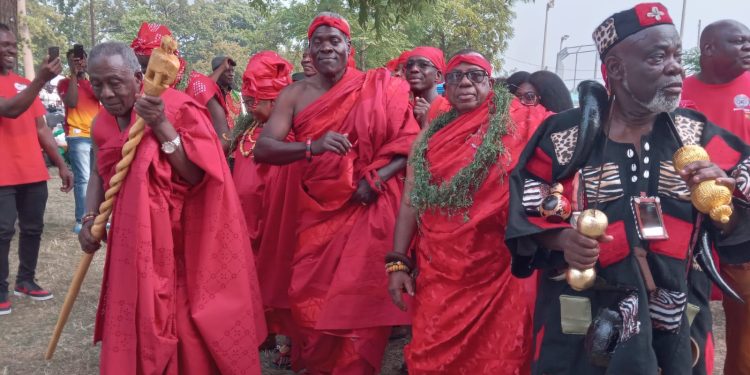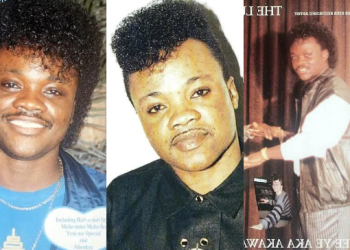In the heart of Mississauga, far from the shores of Accra, the beating drums of tradition echoed proudly. Clothed in the regalia of their ancestors and surrounded by Ghanaian dishes, dance, and devotion, the Ga-Adangbe community in Toronto proved one thing: no matter how far they travel, their roots remain unshaken.
It was a vibrant celebration of culture, community, and continuity as the Ga-Adangbe Association of Toronto brought Ghana to Canada during its spectacular Homowo Festival held on August 3, 2025, at Malton Picnic Park in Mississauga.
In an age where many diaspora communities struggle to preserve cultural identity, this year’s Homowo Festival wasn’t just a festivity; it was a bold statement: “We’re still here, and our heritage lives on.”
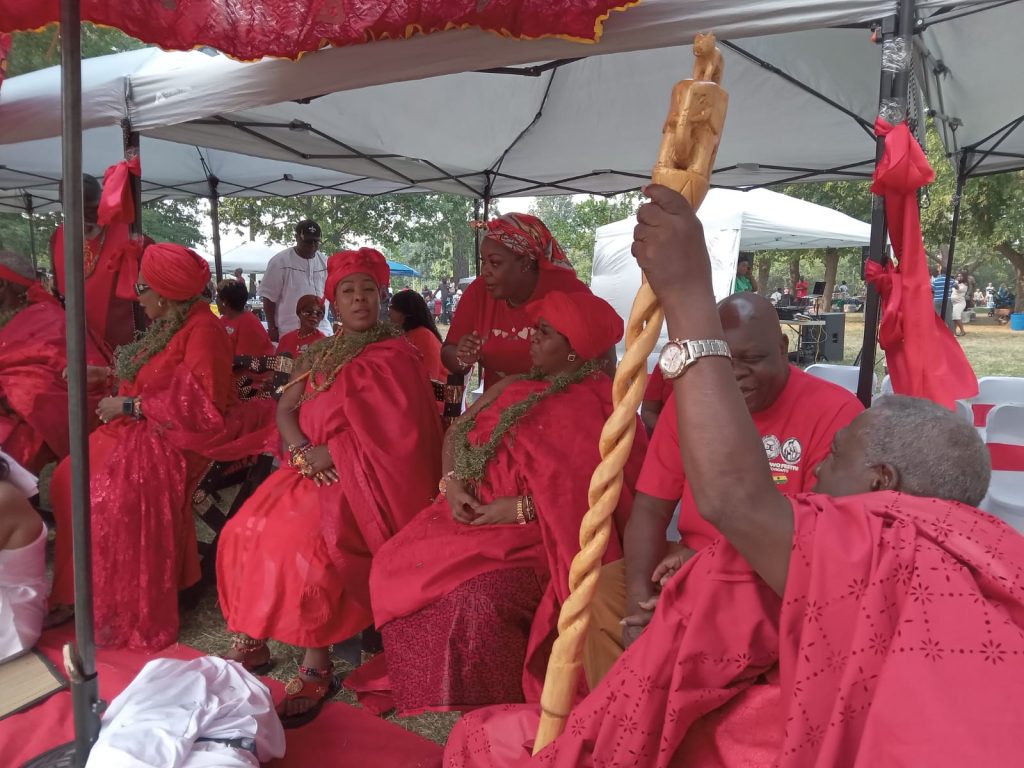
Clad in dazzling kente, intricately woven traditional cloths, coral beads, and native sandals, Ga-Adangbe chiefs and queen mothers led the procession, captivating guests with the poise and dignity befitting Ghana’s rich royal heritage. Their carefully synchronised entrance to the tune of “Wogbe Dzeke” (“We Have Come from Far”) by Ghanaian musician Nat Brew (Amandzeba) was a stunning spectacle that ignited both nostalgia and pride.
Culture in Motion
The rhythms of Kpalongo, a traditional Ga dance, rippled through the air as a vibrant cultural troupe took centre stage. With coordinated movements, the dancers brought ancestral stories to life—feet stomping, hands waving, and bodies moving in unison, accompanied by traditional percussion that invited even the onlookers to sway along.
From the youngest child to the eldest grandparent, the crowd responded with applause, head nods, and wide smiles, proving that even generations born in Canada still recognise and revere the beauty of their ancestral arts.
A Taste of Home
As the aromas of Ghanaian cuisine wafted through the air, culinary heritage became another star of the event. Guests enjoyed mouthwatering dishes including Kenkey and fried fish, Waakye (rice and beans), Banku and okro soup, and the symbolic Kpokpoi, the traditional Ga dish made of steamed cornmeal and palm oil.
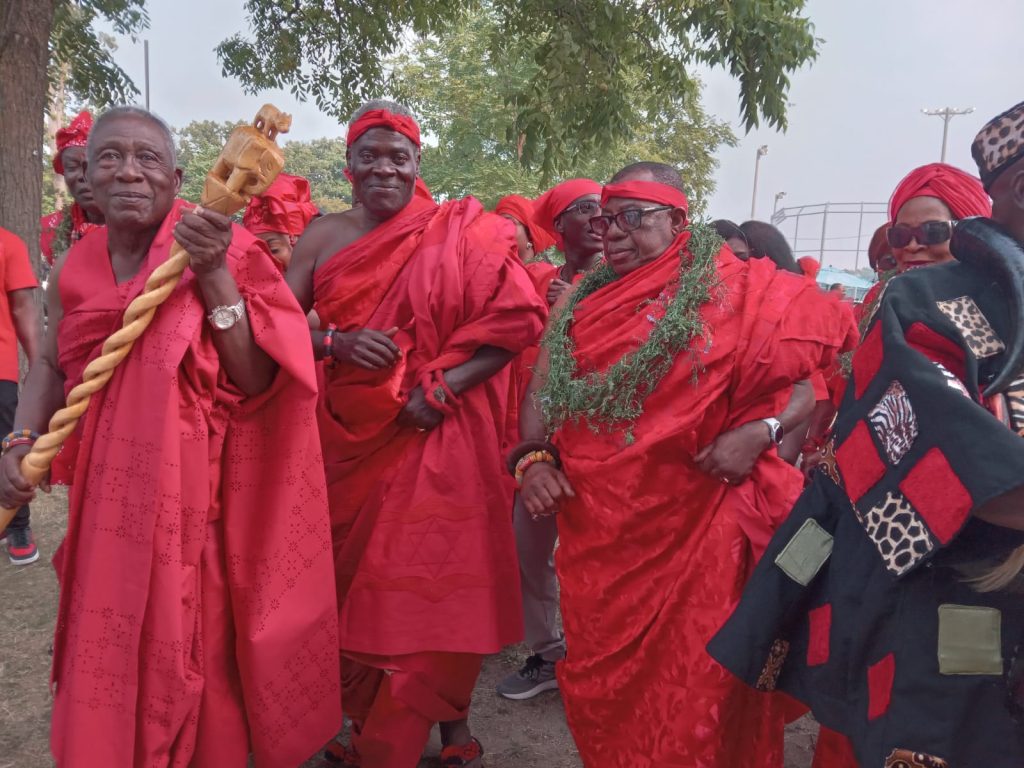
For many, it wasn’t just food—it was memory, it was identity, and it was love served on a plate. Newcomers to the community and long-time residents alike gathered under picnic tents, shared meals, and exchanged stories of Ghanaian villages, childhoods, and festivals long past.
Tradition with a Purpose
The ceremonial heartbeat of the day came during the libation pouring, conducted by Wulomo Nunmo Nii Akrong (Dr.), the Chief Priest of the Ga-Adangbe Association of Toronto. Clad in sacred garb, he stepped forward solemnly to invoke blessings upon both Ghana and Canada, recognising the dual identity many in the diaspora must carry.
“When peace prevails on the land, both citizens and residents live happily among themselves,” he said. “Wisdom demands that wherever one finds themselves, they must pray for peace in that land.”
In a heartfelt prayer, Wulomo Akrong sought blessings for those searching for marital partners, children, employment, and scholarships for students. The crowd responded with thunderous “Amen!”—a collective yearning for divine intervention in their daily lives abroad.
Hooting at Hunger
Following libation, Ga Chief Nii Kwei Anku V officiated the symbolic sprinkling of Kpokpoi, marking the ritual “hooting at hunger.” This act, rooted in the history of the Ga people overcoming famine, now stands as a powerful metaphor of resilience both at home and in the diaspora.
As the Kpokpoi touched the earth, attendees were reminded that though far from home, they still carry the strength of their ancestors and the resilience of their culture.
The Dance of Unity
The grand finale erupted into a moving dance circle, as the elders and youth alike formed a symbolic human chain to the beat of “Wogbe Dzeke.” With two steps to the left, two steps to the right, the crowd embodied the spirit of unity across generations, oceans, and cultures.
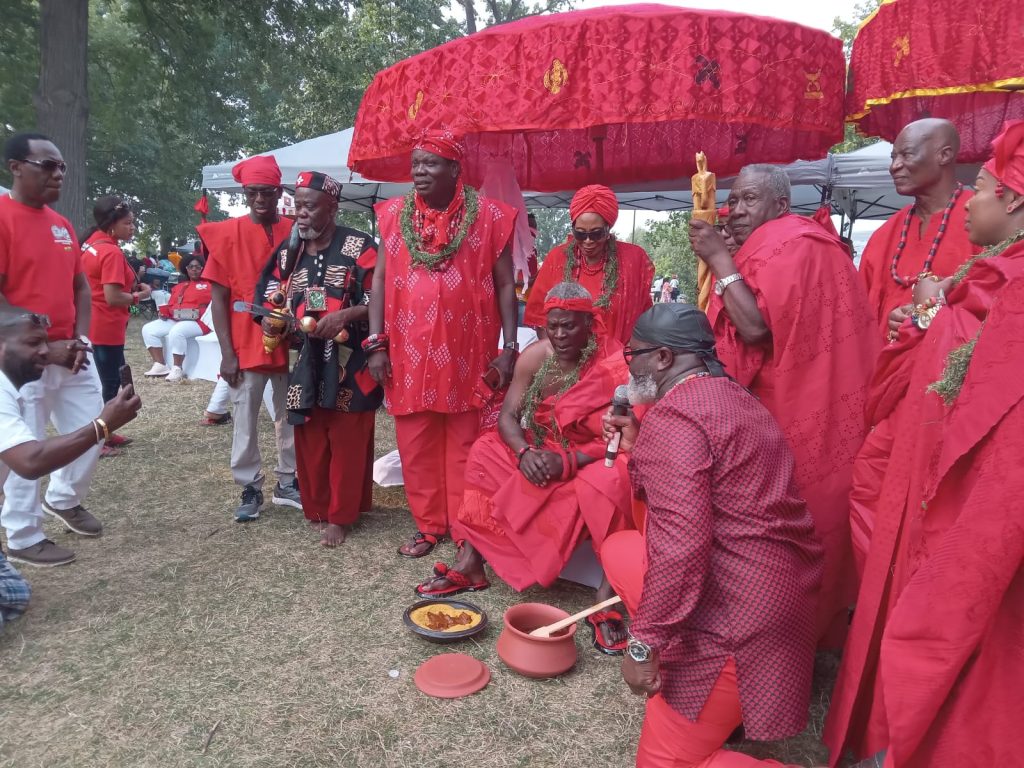
This wasn’t just dance; it was identity in motion.
Preserving Heritage Across Borders
In a time where many African traditions face erosion in the diaspora, the Ga-Adangbe Association of Toronto stands out as a shining example of cultural preservation. Through annual events like Homowo, they are not only celebrating, but teaching, transmitting, and transforming Ghanaian culture into something that thrives even thousands of kilometres away.
“These associations are more than social clubs,” said one organiser. “They are bridges between who we were, who we are, and who our children will become.”
As the sun set over Malton Park, the joy of community lingered in the air. The Ga-Adangbe people of Toronto had not only honoured their ancestors they had renewed a legacy.
And with each song sung, each libation poured, and each plate shared, one thing was made clear: you can take the Ga-Adangbe out of Ghana, but you can’t take Ghana out of the Ga-Adangbe.
By Stephen A. Quaye, Toronto-Canada

